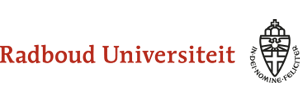American English Phonetics
Another American English Faculty Project
5.2.2 The closed and narrowed glottis
It is possible during phonation to suddenly close the glottis, hold that closure briefly, and then, equally suddenly, allow it to vibrate again. The ’sound’ is known as the glottal stop and is symbolized [ʔ]. Many of us use it in very informal situations to indicate ’no’, going [mʔm], as we may do when addressing children. We all use it to separate the two vowels of beoog ([bəˈʔo.x]). Often voice occurs only before or only after the glottal stop. In fact, whenever we say a word beginning with a vowel in Dutch, we are likely to start off from a glottal stop.
It is also possible to bring the vocal cords together to form a narrowing which produces a whisper when air passes through it. Whisper the Dutch word hoe and notice how the difference between AN /h/ and /u/ disappears. (This is not surprising, because AN /h/ in this word is normally pronounced as an [u] with breathy voice and AN /u/ is an [u] with normal voice: when we substitute whisper for voice, no difference remains.) While AN /h/is really a vowel said with breathy voice, GA /h/ is really a whispered vowel. GA /h/ is therefore called voiceless h, as opposed to AN /h/, which is called voiced h.
In order to feel how we normally start off with a glottal stop before a word-initial vowel, whisper the Dutch words hoen and oen, or hij and ei: note that the former in each pairs begins gradually, while the latter is preceded by a glottal stop. The symbol [ ̥ ] is used to indicate that a sound is voiceless (open glottis) or whispered (narrowed glottis): the pairs could therefore be transcribed [u̥u̥n̥] and [ʔu̥n̥], [ɛ̥ɛ̥ɪ̥] and [ʔɛ̥ɪ̥].
Summarizing, there are four major states of the glottis:
1. open glottis: voiceless sounds are produced, for example [t] in GA tea, and [s] in GA say.
2. vibrating glottis: voiced sounds are produced (three different types), for example [m] and [a.] in AN maak, [eɪ] in GA say.
3. closed glottis: required for the production of [ʔ], as in AN beoog.
4. narrowed glottis: to produce whisper, and GA /h/.
